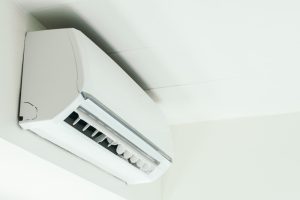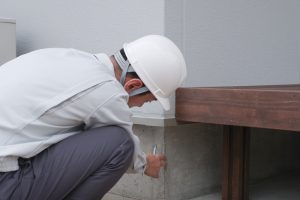The Importance of Regular Roof Inspections: When and Why You Need Them

The roof protects your home from harsh environmental elements and structural damage. It plays an important role in your property’s safety and value. But over time, the roofing material deteriorates and leads to potential issues like moisture retention and blocked gutters due to neglecting minor repairs. Regular inspection at least once a year can help you catch these issues before they escalate to major ones. This will prolong the lifespan of your roof and safeguard your home’s structure and investment.
Why Roof Inspections Matter?
Roof inspection by professionals can help detect hidden issues that, if left unchecked, can develop over time and often become visible when replacement remains the only option. It helps you catch damage early and allows timely maintenance on a friendly budget.
Prevents Costly Repairs by Detecting Issues Promptly
Your roof is exposed to continuous sun rays or sometimes, heavy snowfall. These elements, alongside many others, reduce the effectiveness of the structure as time progresses, no matter how durable the material used. The maintenance of roof tiles, or at least inspecting them after every harsh weather episode, is necessary to find any cracks or missing shingles during the storm.
If you ignore these signs and delay repairs, water can seep into the walls and lead to premature replacements of the whole structure. For instance, if you find out a crack or a missed shingle, you only need to replace one, but if you leave it untreated, it evolves into a major issue that can cost you double, probably.
Increase the Longevity of Roofing Materials with Timely Maintenance
Another major benefit of regular roof inspection is that it adds more than 10 years to your roofing material’s typical lifespan. All materials, for instance, the commonly used Asphalt shingles in the UK, have a maximum functionality of 10-15 years. However, in some regions, unpredictable weather makes it prone to wear and tear earlier than expected. This can be overcome through addressing the issues in a timely manner. By fixing the loose tiles, broken flashing, or clear debris, you can preserve the roof’s lifespan and make it last 20 or even 25 years.
Financial Benefits: Saving Money in the Long Run
Although scheduling roof inspections involves some upfront cost, it is a financially sound investment. It keeps the warranty and insurance coverage intact in case of significant damage. When you detect problems early, you avoid expensive repairs and emergency fixes. It allows you to keep the structure safe and sound with a small amount of routine maintenance instead of paying thousands to replace it.
For instance, stopping leaks can prevent water damage to the ceiling or electrical systems. This saves you from costly renovations and insurance claims. Insurance companies may also lower your premiums when you show proof of regular roof inspections.
Protects Your Home Value and Structural Integrity After Years
A solid roof means a stable structure and long-term protection for everything beneath it. When you are maintaining your roofing integrity by routinely inspecting, you indirectly enhance your property’s market value and the overall strength of your home.
Buyers often notice this, and a recent inspection report can boost their confidence and interest in purchasing your home. Moreover, identifying weak spots immediately stops moisture from spreading and causing rot or mold that often decreases the curb appeal of the structure.
When Should You Schedule a Roof Inspection?
Simply put, schedule a roof assessment once a year by an expert roofer in Norwich if you live in a moderate climate. You should also do a self-inspection by standing on the ground to check debris buildup or standing water on the roof. An asphalt shingle roof needs more frequent attention than metal or slate tiles. So, understand roofing material maintenance requirements because, as it ages, it requires close monitoring.
Regular intervals ensure you stay ahead of any deterioration.
- Before buying or selling a property.
- Your roof reaches 10-15 years of life.
- One or 2-times a year, ideally in spring and fall.
- When experiencing prolonged extreme storms or hail weather.
- Anytime you notice potential warning signs or unusual smells indoors.
- Before winter to detect any vulnerabilities that snow and ice could worsen.
Conclusion
Inspecting a home roof monthly or yearly can stop the damage from escalating into costly repairs. It provides early warnings of potential issues, prolongs your roof’s service life, and saves you from premature replacements. Always hire a licensed and insured roofer for a detailed evaluation and to resolve the problem on the spot. You can also perform basic visual checks, like clogged gutters or moss growth, but rely on professionals to do the task accurately and safely.






